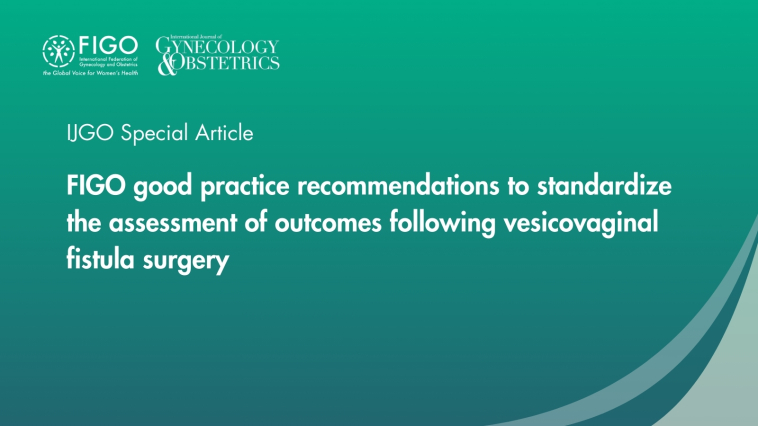Standardising success: FIGO releases good practice protocol for post-vesicovaginal fistula surgery outcomes

FIGO has unveiled a comprehensive protocol to standardise the assessment of surgical outcomes following vesicovaginal fistula (VVF) repair.
VVF, a debilitating childbirth injury affecting millions globally, often leaves women with ongoing emotional and physical challenges, including ongoing urinary incontinence in approximately 25% of cases, even after surgical intervention. Accurate postoperative evaluation is critical to ensure optimal outcomes and provide additional care when needed.
Based on the insights of leading fistula surgeons participating in the FIGO Fistula Surgery Training Initiative, this step-by-step protocol ensures meticulous assessment to determine if a patient is cured, has residual urinary incontinence, or requires further treatment. It includes a timeline for dye tests, measurement of postvoid residual volumes, and standardised pad tests to objectively gauge urinary leakage and appropriate subsequent management.
Key recommendations include:
- Dye test (10–14 days post-surgery): Detects repair integrity before catheter removal.
- Postvoid residual volume assessment: Measures bladder emptying efficiency.
- Pad test: Quantifies urinary incontinence severity to guide next steps.
The protocol’s accessible design emphasises cost-effectiveness by utilising widely available materials, ensuring it can be implemented in low-resource settings. Free flowcharts and guidelines in multiple languages are available through the FIGO Fistula Resource Hub.
"This protocol represents a significant step forward in standardising care for women recovering from vesicovaginal fistula repair. By offering clear, evidence-based guidelines, it enables thorough assessments that promote optimal outcomes and significantly enhance patients' quality of life.
– Gillian Slinger, Co-Author and Head of the FIGO Fistula Surgery Training Initiative
FIGO anticipates that these guidelines will lead to better patient outcomes, reduce premature discharges, and foster a shared language among the fistula care community. Additionally, ongoing efforts are addressing urinary incontinence post-surgery, with FIGO and Hamlin Fistula Ethiopia spearheading global collaborations to refine management techniques.
This initiative underscores FIGO's commitment to improving quality of life for fistula patients and enhancing care standards worldwide. For further details and free resources, visit the FIGO Fistula Resource Hub.